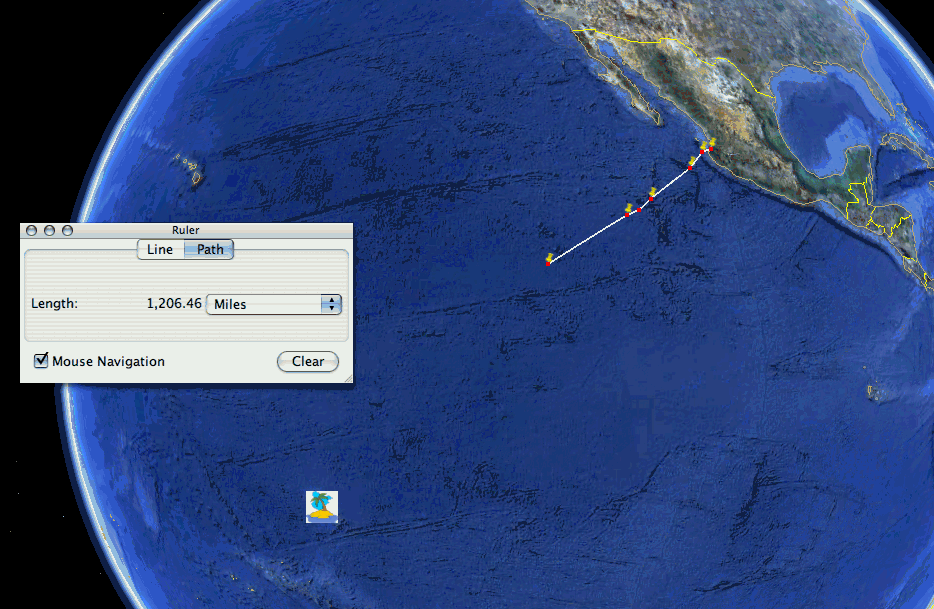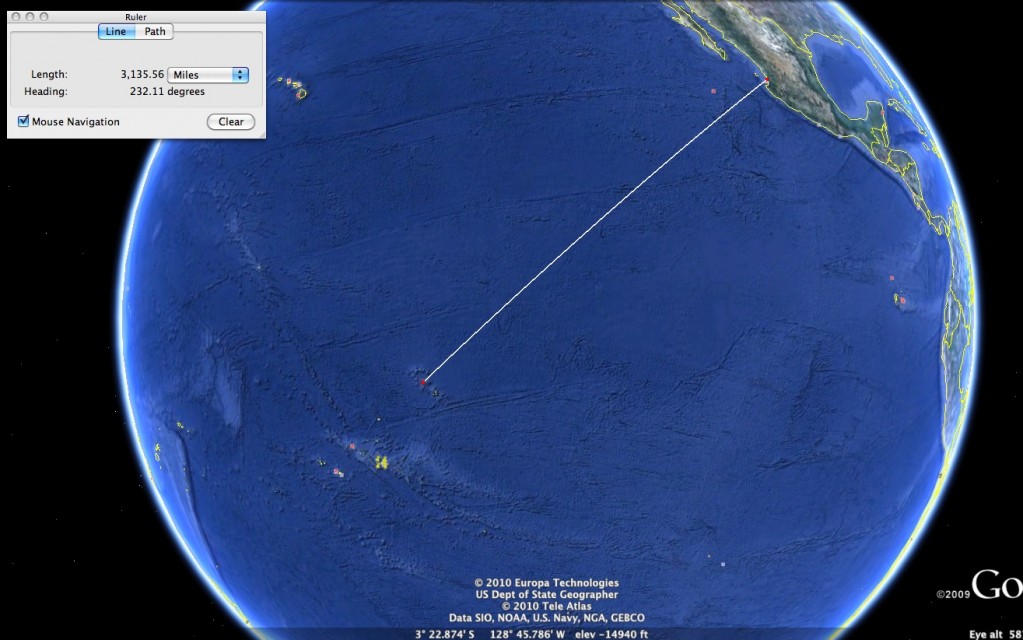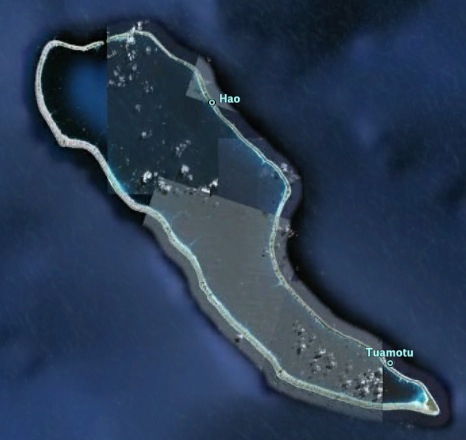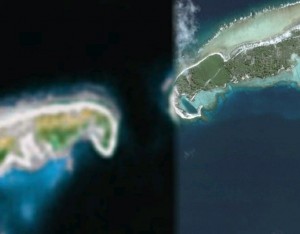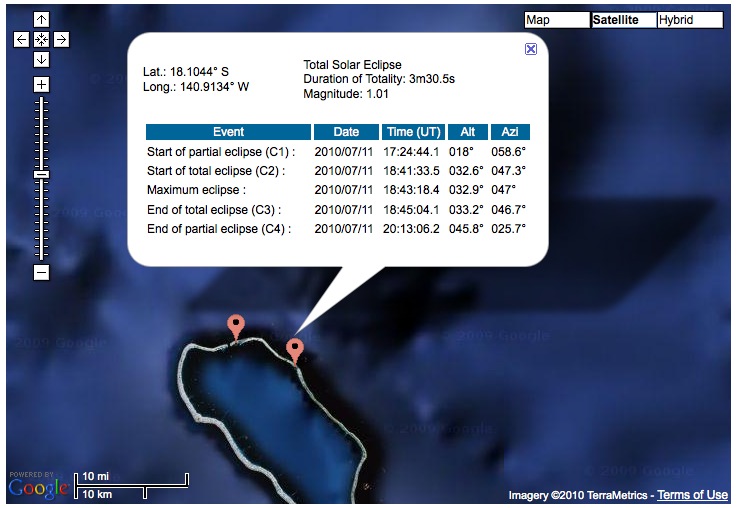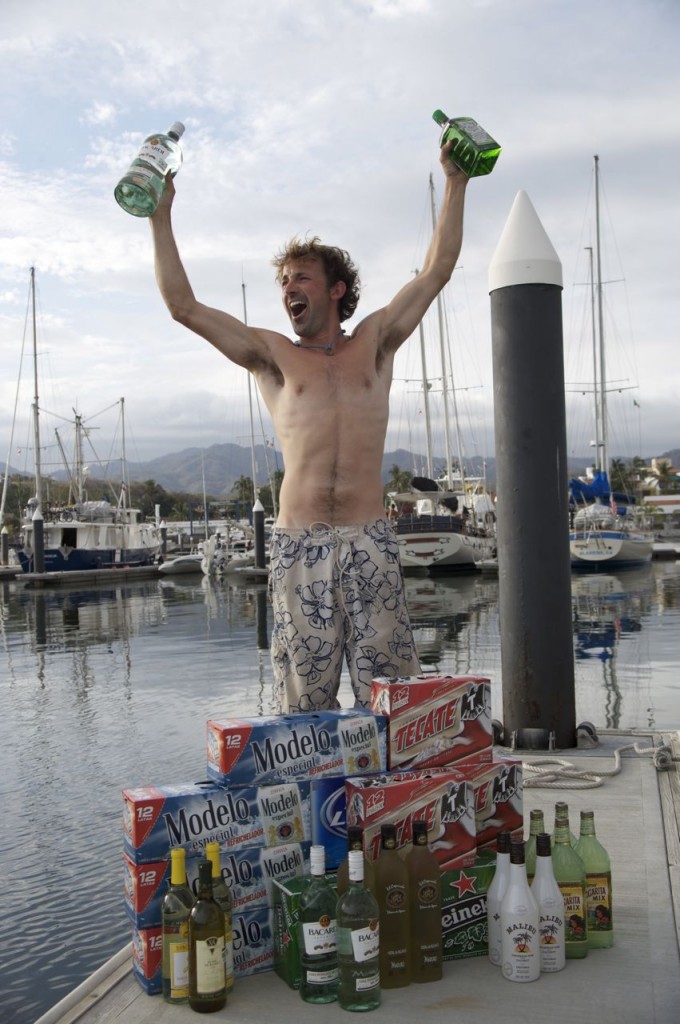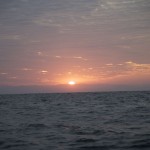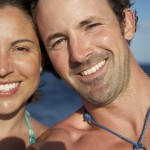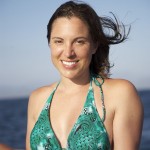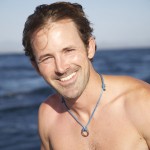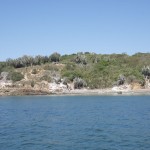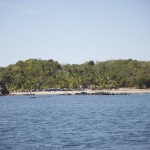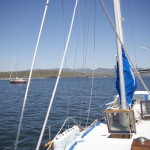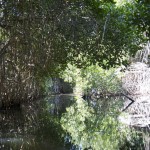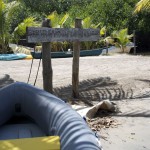(post dated–this post generally refers to events on 3/29 and 3/30)
At midnight Karen grabs my foot and gives it a shake. I take off my eye mask and take out the earphones I’m wearing which along with my I-Pod and Sarah McLachlan, had me asleep in minutes three hours earlier despite the noise of the engine. I was surprised at how much louder the engine sounds at night versus during the day. I suppose the new soundproofing in the engine room was doing something, but I couldn’t tell. I stumble around for about 10 minutes, getting dressed slowly and wobbly. I can’t find my headlamp or my sailing knife. I want some light and so switch on a light in the cabin, and quickly move the switch to the red light setting that is supposed to preserve your night vision. The cabin now resembles a submarine on high alert. I half expect Gene Hackman to barrel down the companionway yelling “down ladder!” I imagine us on high alert. Matt is up, walking around and off-handedly comments that he and Karen stopped using the red lights. They don’t really provide enough light to do anything, which I quickly found to be true, and your eyes adjust fast enough when you are up on deck. High alert deflates immediately. The engine continues to groan away as we travel through unfortunately light winds for our passage. I plop down at the nav station to look at the log book and the AIS chart on the computer. My night watch is about to start.
Before I even arrived, we had started talking about sailing a day or two north to San Blas. However, the weather seemed to be less than ideal to the north, so Karen found a entry in the cruising guide that talked about a fine anchorage to the south that had some snorkeling and a fantastic sounding dinghy river trip. South it was. Next came talk of who was going to take what watch. I knew this conversation was coming. And i knew exactly what I wanted. The night shift. Wake me up at midnight or 1 am and send me out. I wanted this for a number of reasons. One, I feel, (it’s not just a feeling, I definitely am) behind in this obscure scale of mine that measures “personal discomfort” investment into the boat. I don’t have much of this. Matt has, well it’s somewhat amazing he hasn’t collapsed under the weight of how much he has endured. Second, I wanted to experience as much of the cruising experience as possible. Taking the night watch fit nicely there. Finally, it just seemed the nice thing to do, to let Matt and Karen sleep together through the night.
After examining where we were on the AIS, I head up on deck. Matt joins me and says we should put up the main sail and the drifter. I’m super excited that we’ll actually be sailing on my watch, at least to start, instead of motoring. It feels so much more pure. After Matt helps me put up the sail, he heads off to bed, and I’m left alone on the night watch. An alarm is set to ring every 23 minutes. After two iterations of the alarm, I’m starting to get tired, and so lie down in the cockpit, realizing that I’ll be sleeping during some of this watch. I’m looking directly up at the stars, and soon I’m dozing off, 1/2 awake, 1/2 asleep, dully waiting for the alarm to go off. It does, I go through the watch routine, and quickly get back to lying down. This time I’m out quickly. Thirty minutes later Matt is in the companionway reaching out to the cockpit to hit my feet saying “Dude, you slept through the alarm. You can’t do that. Put the alarm closer to your head.”
On the night watch, there is one main responsibility. Make sure the boat doesn’t hit anything. Two lesser responsibilities are to 1) sail the boat well so you get to your destination faster. 2) control the boat so that it is easier for others to sleep. Matt and Karen’s system they developed uses a watch that goes off at set intervals. Pretty much all cruisers have an alarm set for certain intervals. Matt and Karen have the watch set for 23 minutes. So every 23 minutes, it’s the job of whoever is on watch to stand up, or wake up if necessary, look all around the horizon for other boats or land, and make sure you aren’t about to hit either of those. It’s fascinating what you can see at night on the horizon. All night we were in sight of shore so lights from there abounded. At various times, other boats were on the horizon. It’s enjoyable to spot lights on the horizon and watch over the next hour or two as they slowly move in relationship to the boat. Of course if they are moving that slowly, it’s probably another sailboat. The fast lights are the ones to worry about. The cargo ships.
Matt disappears back down the companionway, leaving me alone fuming at myself. My first night watch and I’ve made a HUGE mistake. Damn it. Not how I wanted to start. Not the impression I wanted to make on Matt and Karen that I was a competent addition to the sailing team. I am furious at myself and embarrassed. Sure, the likelihood that at the exact interval I fell asleep 1) another boat would be just over the horizon that I couldn’t see on the last sweep, 2) wasn’t on the AIS that would alert me to boats further out, 3) was headed on a collision course with us and 4) did not veer off that collision course because they of course don’t want to hit us…. yes the likelihood of all that happening is low. Doesn’t matter. Sleeping through a watch interval is way out of line. I was not happy with myself.
Later in the night, the alarm goes off. It is strapped to the band on my headlamp now, directly next to my ear, and so it wakes me immediately. I get up and start to go through the routine I began to do at every alarm. I rapidly check our compass heading and speed. I then spend longer than necessary gazing in a slow 360 degrees off into the distance, looking for lights. Each time I see lights, I get our binoculars (Thanks mom and dad!!!) and using the internal compass of them, note the heading to the lights and try to discern where it’s going. If I see a red light, it means I’m looking at the port side of the other boat. If I see green, I’m looking at the starboard side. You can also tell things by the location and height of the white lights from a boat, but I’m not as sure about those. Need to learn that. Next I slide down the companionway, moving as quietly as possible past the quarterberth where Matt and Karen are sleeping, generally with the door open to increase airflow and keep it cooler in the cabin. I have a seat at the nav station and take a look at the awesomest part of the night watch routine: checking the AIS transponder which is linked into the navigation software MacEnc, on the computer. Matt has discussed his love for it in the past, and I have to back up that opinion 100%. After checking the AIS both for ships and to ensure we are headed in the correct direction, I head back up on deck and do a quick scan of the horizon. Finally, I look at our sails and see if they need adjustment. Then it’s back to reading, writing or sleeping.
At 2:30 am on the second night, I watched us thread the needle between two 900 foot long cargo ships doing 14-18 knots. I had seen the two ships when they were 20 miles away on the computer, long before I would be able to see them on the horizon. Nonetheless, as soon as I saw them on the computer headed straight for us, I excitedly hopped up on deck, grabbed the binoculars, and stared out into space to where the boats should be. I was met with nothing but blackness. A black sky with foreboding moon and a glistening, flat, black sea. An hour later however, I could see lights. Lots of lights. High, towering lights. That still seemed to be coming straight for us. The AIS, though, showed their actual heading, and ours. We would pass the first to our starboard, by a mere mile. The other, five minutes later, passed to port by even less, about 1/2 a mile. I didn’t sleep at all for that hour, and gained an enormous appreciation for the additional safety the AIS brought us. I saw them when they were over an hour away and knew their exact heading relative to us. If we didn’t the AIS, they would have been twenty minutes or less away on an uncertain course that would have looked extremely troubling. With the AIS, we didn’t have to divert our course, and I felt no danger to the boat, though I did anxiously watch the AIS and the horizon for the entire hour. I certainly was too excited to sleep, this being only my second night watch. But I felt confidently safe. Without the AIS, I would have had to hail the vessel, not always possible, and try and figure out a way by both ships. I can envision this being a confusing hail, with both boats so close, heading in the same direction and with the approximate same speed. With the AIS, there was minimal concern. The rest of the night passed uneventful. My second night watch slowly winding down, I finished most of the novel I was reading, enjoying the near full moon as it arced lazily across the sky. My first real introduction to cruising. I think I’m going to like it.
